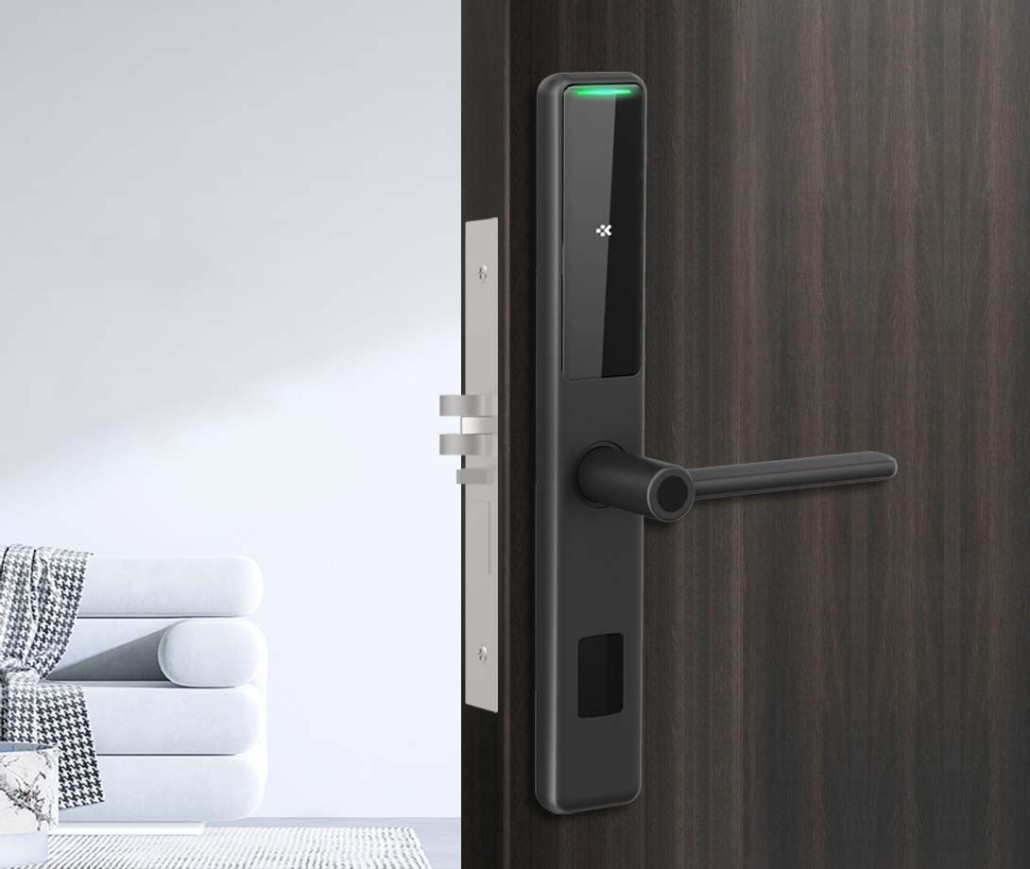Smart Door Locks: Is Face Recognition Safer Than a Password?
As smart home technology advances, traditional keys are becoming a thing of the past. Two of the most popular keyless entry methods today are face recognition and password (PIN code) door locks. Both offer convenience, but which one is truly more secure?
For American homeowners considering a smart lock upgrade, this is a crucial question. Does facial recognition provide better protection against break-ins, or are passcode locks still the safer choice? This guide compares the two technologies, examining security risks, convenience, and real-world reliability.
How Face Recognition Door Locks Work
Facial recognition locks use biometric technology to identify authorized users. Here’s how they function:
- Enrollment – The lock scans and stores facial features (e.g., bone structure, eye spacing) as a digital template.
- Authentication – When someone approaches, a camera or infrared sensor captures their face and compares it to stored data.
- Access Decision – If there’s a match, the door unlocks; if not, entry is denied.
Types of Facial Recognition Tech in Locks:
- 2D Camera – Uses basic image matching (less secure, vulnerable to photos).
- 3D Depth Sensing – Maps facial contours (more secure, harder to spoof).
- Infrared (IR) Scanning – Works in low light and detects live skin (anti-spoofing).
How Password (PIN Code) Locks Work
Passcode locks require users to enter a numeric sequence to unlock the door. Features include:
- Code Setup – Homeowners program one or more PINs.
- Verification – The system checks entered codes against stored ones.
- Access Control – Correct codes unlock the door; incorrect attempts may trigger alarms.
Security Enhancements in Modern Passcode Locks:
- One-time temporary codes (for guests).
- Auto-lock after failed attempts.
- Encrypted data storage (to prevent hacking).
Security Comparison: Face Recognition vs. Password
Advantages of Face Recognition
No Codes to Remember or Share – Eliminates risks of shoulder surfing or code leaks.
Harder to Spoof (If Using 3D/IR Tech) – Fake photos or masks won’t work on advanced systems.
Hands-Free Access – Great when carrying groceries or luggage.
Potential Risks of Face Recognition
False Acceptances/Rejections – Glasses, hats, or aging can affect accuracy.
Privacy Concerns – Some worry about biometric data storage (though most locks store data locally).
Higher Cost – Advanced 3D facial recognition locks are pricier than passcode models.
Advantages of Password Locks
No Special Hardware Needed – Works in all lighting conditions.
Easy to Change Codes – If a code is compromised, just update it.
Lower Cost – Basic keypad locks are more affordable.
Potential Risks of Password Locks
Shoulder Surfing – Someone could spy on your code entry.
Wear & Tear on Keypad – Smudges may reveal frequently pressed numbers.
Weak Codes – Simple PINs (e.g., “1234″) are easy to guess.
Which Is More Secure?
| Factor | Face Recognition | Password (PIN) |
|---|---|---|
| Spoofing Risk | Low (with 3D/IR) | Moderate (if code is seen) |
| Convenience | Hands-free | Requires manual entry |
| Privacy Concerns | Some users wary of biometrics | No biometric data stored |
| Works in Darkness? | Yes (with IR) | Yes (backlit keypads) |
| Cost | Higher | More affordable |
Verdict:
- For maximum security, 3D/IR facial recognition is harder to hack than a passcode.
- For budget-friendly & reliable security, a strong PIN code system (with anti-tamper features) is still effective.
Can Face Recognition Be Hacked?
While advanced facial recognition is difficult to fool, potential vulnerabilities include:
- High-Quality Photos/Videos (for basic 2D systems).
- Twins or Lookalikes (some systems may be tricked).
- Technical Glitches (poor lighting or software errors).
How to Improve Face Recognition Security:
- Choose locks with liveness detection (infrared or skin texture analysis).
- Enable multi-factor authentication (e.g., face + PIN).
Can Password Locks Be Hacked?
Yes, but risks can be minimized:
- Shoulder Surfing – Shield the keypad when typing.
- Code Guessing – Avoid obvious sequences like “0000.”
- Worn-Out Buttons – Clean the keypad regularly.
How to Improve Password Security:
- Use 6-8 digit codes instead of 4-digit ones.
- Enable auto-lock after failed attempts.
Best Use Cases for Each Lock Type
Choose Face Recognition If:
- You want hands-free, high-tech security.
- You’re okay with a higher upfront cost.
- You prefer no codes to remember or share.
Choose a Password Lock If:
- You want a budget-friendly, reliable option.
- You need easy access for guests (temporary codes).
- You’re concerned about biometric privacy.
Hybrid Approach: Best of Both Worlds?
For maximum security, some smart locks combine:
- Face recognition + PIN code (multi-factor authentication).
- Fingerprint + password backup.
This ensures that even if one method fails, another keeps your home secure.
Final Verdict: Which Should You Choose?
Face Recognition Wins For:
Cutting-edge security (with 3D/IR tech).
Convenience (no codes to remember).
Password Locks Win For:
Affordability & simplicity.
Easier guest access management.
For most homeowners, the best choice depends on:
- Budget (face recognition costs more).
- Security priorities (biometrics vs. traditional codes).
- Ease of use (hands-free vs. manual entry).
What’s Your Preference?
Would you trust face recognition for your front door, or do you prefer a classic passcode? Share your thoughts in the comments!
Post time: Jun-20-2025


